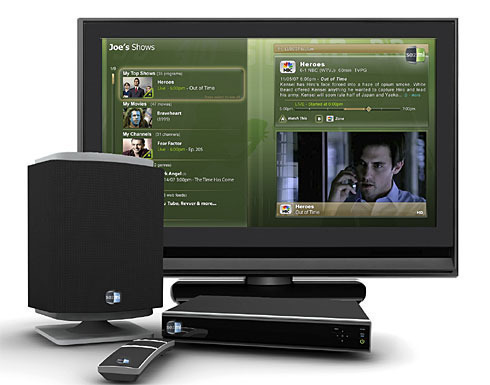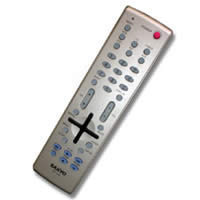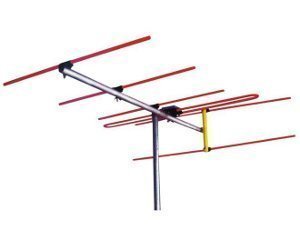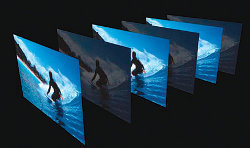Fiber optics have quickly become a namesake in our modern world of technology. First there was the fiber optic Internet connection, then there were fiber optic landline telephones, and now there is fiver optic television. Fiber optic television is easy to use, provides more functionality than cable and satellite television, is highly reliable, and has much better quality than cable and satellite television. In this article, we will explain what fiber optic television is, how it compares with cable and satellite television, terms such as FTTN, FTTP, and HomePNA, and introduce you to two brands of fiber optic television: AT&T U-Verse, and Verizon FIOS.
What is Fiber TV
Fiber TV, or fiber optic television, is a new product that uses fiber optic cables to transmit information to your television. Fiber TV is more reliable than other forms of television, it provides the user with better quality, and it usually has more programs available to you for less than what other forms of television may cost you. Fiber optic threads are run directly to your house and connected to the cables that have already been installed in your home. Once this is done, you will be able to take advantage of your fiber optic television in every room that has a cable outlet.
Fiber Optic TV VS Cable
Fiber Optic television is both better and worse than cable. Fiber optic television uses high-grade plastic or glass wires to transmit pulses of light which is then decoded into information when it reaches your television where as regular cable television uses copper wires wrapped in aluminum foil to transmit electrical signals to your television set where it is decoded into audio, colors, and frames. Fiber optic cables can be stretched over extremely long distances while maintaining good picture and sound quality while cable loses its quality over a certain distance. Fiber optic cables also have much better quality than cable does, even when you factor in high definition packages. On the downside, however, fiber optic cables must be installed perfectly or they will not function. Fiber optic television is also new and it may not be available in your area.
Fiber Optic TV VS Satellite
Satellite television usually gains its superiority over cable television because it provides the user with more programs, availability, and picture quality. This is not the case with fiber optic television because fiber TV provides you with all of these things. Satellite television, however, has the downside of losing its reception when an outside force affects the signal. Because fiber optic television is ran directly to your house, you do not have the negative side effects that come with satellite television.
FTTN
FTTN, or Fiber To The Node, technology is a fiber optic design that involves fiber optic threads leading to a control box that covers an entire neighborhood or more. Several hundred customers can connect to the same control box at the same time and maintain constant picture quality. Customers generally connect to the control box using regular coaxial cables.
FTTP
FTTP, or Fiber To The Premises, technology is a type of fiber optic design that involves fiber optic threads that connect the central office directly to a customer's residence. FTTP can also refer to a fiber optic cable that connects to a utility pole outside of a customer's residence. FTTP is generally reserved for organizations or customers that do not live in an area with a FTTN setup.
HomePNA
HomePNA, or Home Phoneline Networking Alliance, as it was previously known as, is a organization that finds a way for services and products to upgrade their quality by using the same cables and wiring that is already outfitted into customers' homes. HomePNA covers Internet access, phone lines, and television. Fiber TV services are generally approved and distributed by the HomePNA.
AT&T U-Verse TV
AT&T U-Verse TV offers up to 230 channels, a multi-view channel browser, video on demand, choice programming, and fiber optic quality for $67 per month. AT&T U-Verse TV is available everywhere that AT&T landline telephones are available and customers have the option of bundling it with other services, such as AT&T U-Verse High Speed Internet or AT&T U-Verse Voice, which are both fiber optic in nature.
Verizon FIOS
Verizon FIOS is a fiber optic service provided by Verizon. Verizon FIOS is available in three separate television plans as well as the option to bundle it with Internet and phone for only $89 per month. It also comes with a free DVR that allows you to record all of your high definition shows. Verizon FIOS offers everything that you would expect in a normal cable service with the added bonus of fiber optic quality and reliability.




Bruce
This article is very misleading. The author needs to do his/her homework on Cable TV. Almost all cable operators use HFC (Hybrid Fiber Coax) which is a combination of Fiber Optic cable and Coax cable (FTTN), and many already have FTTP. Fiber optics in Cable TV has been around since the early 90’s. Fiber transmits the exact same digital information that Coax does, just in a different medium. Yes, Fiber is capable of longer distances without signal loss, but a well maintained HFC network can produce quality video that is just as clear as Fiber. I have been on an HFC network since 1995 and I get clear HD1080p video and now have 1G internet on the same system. Further more, the content availability has nothing to do with whether it’s Fiber or Coax. That is strictly a TV provider decision based on markets and contracts with broadcasters/networks.
Mars
I have high end TV set up,tried Dish Network,Direct TV,but Comcast cable kills both of them in HDTV picture quality in my eyes…sorry.Will see how good fiber optics is going to be in few days.All those online comparisons are not helping in picture quality aspect at all except functionality 🙁
dale
Hybrid Copper/Fiber will never be as clear or reliable as 100% Fiber Optic delivery.